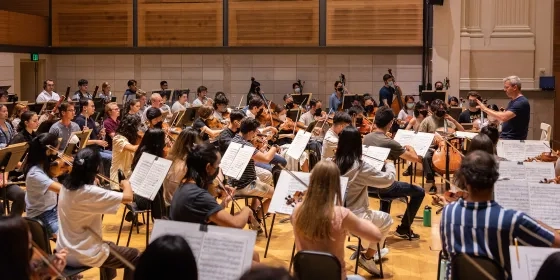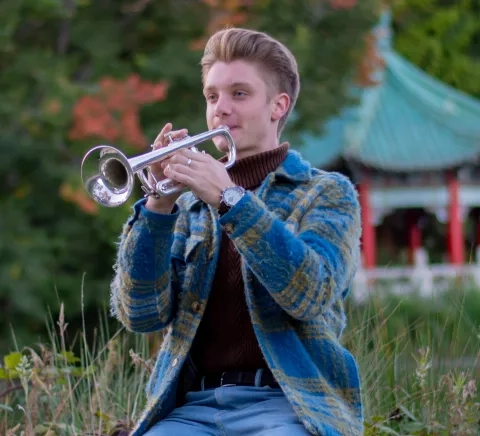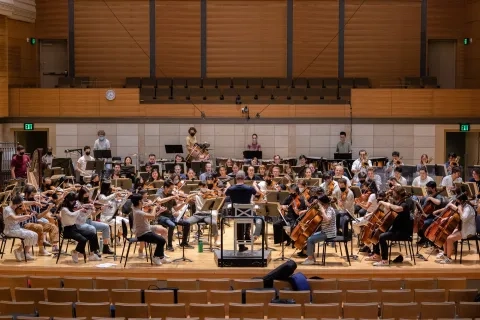Go Big or Go Home: Mahler’s Longest Symphony Rings In SFCM’s Orchestra Season
After a canceled performance in spring, Mahler’s towering work is ready to come roaring back to SFCM—along with one of its soloists, who's been prepping for his moment for over a decade.
by Alex Heigl
Michail Thompson still remembers his first stab at the exalted posthorn solo in the third movement of Mahler’s epic Symphony No. 3.
“I was in this youth orchestra that I joined at the end of my fourth-grade year, so then, fifth-grade, to re-audition, they give you a packet of excerpts, and in that packet for whatever reason, was this solo.”
Thompson said he remembers being “terrified” of the solo and “working on it all the time.” But sadly for the young horn player, it did not go well. “We had a school concert where everyone played something that they’d been working on, and I went up and played the posthorn solo…. Just a super-rough, out-of-tune fifth grader on a beat-up trumpet trying to play that.”
But as the SFCM Orchestra performs Saturday, Thompson will get his chance to conquer the solo: “I like to think that it beat me then, but I’m going to beat it now.” (Thompson studies with Adam Luftman at SFCM.)
“The posthorn solo is a challenge because it is long and deliberately naïve,” SFCM Music Director Edwin Outwater said. “In the context of the movement, it's meant to soothe. There's not a lot happening on the surface, so the player must make the sound of the instrument itself engaging, calming and inviting.“ Mahler wrote the solo for a posthorn, a brass instrument that originated in the 18th century and was used to signal the approach of mail coaches. It’s usually played offstage by a trumpeter.
As that trumpeter, Thompson plans to take these notes to heart, saying, “The solo comes after the first and second movement, which is a lot of playing on the face. There’s a certain amount of time you can play the trumpet before you start getting really tired in the lips and things start to hurt. So it takes some planning to be able to be in your best shape for that solo.”
Contemporaneous accounts of the debut of No. 3 were, in a word, glowing. A Swiss critic, William Ritter, wrote that when the piece premiered in 1902, the last movement was "Perhaps the greatest Adagio written since Beethoven." After the symphony concluded, Mahler was beckoned back to the stage a reported 12 times, with one newspaper claiming that his ovation lasted for 15 minutes.
“Mahler 3 is such a sprawling sonic space, and so the biggest feeling is discovery,” Outwater said of the piece as a whole. “We're all discovering the music together: the big moments and sounds, but also the tiny details like pairing a horn trill with a tambourine roll, or how a slight change in an articulation can make a world of difference.”
Having the Symphony in the Caroline H. Hume Concert Hall will, according to Outwater, “be a unique experience … With the full energy and enthusiasm of our students and guest artists, it will be totally exciting and immersive and a must for any fan of Mahler or orchestral music in general.
Outwater continued, “Feeling this piece come alive and the dedication, skill and teamwork of our students is thrilling. You won't want to miss this concert!”
Thompson is raring to go for his rematch with the horn solo. “I’m here for round two, like 11 years later,” he said. And with Outwater and his fellow students supporting him, he’s sure to achieve more than a measure of success.
Learn more about studying brass or conducting at SFCM and reserve tickets for the Sept. 24 performance here.


